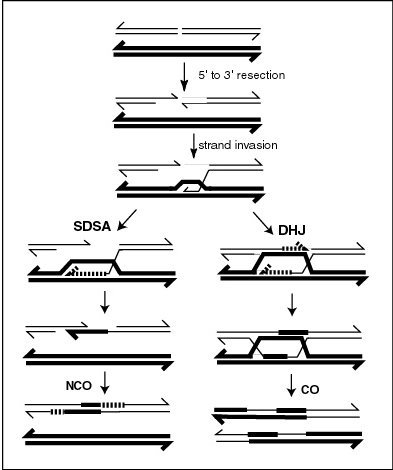D-loop
A diagram in the paper introducing the term illustrated the D-loop with a shape resembling a capital "D", where the displaced strand formed the loop of the "D".
Researchers at Caltech discovered in 1971 that the circular mitochondrial DNA from growing cells included a short segment of three strands which they called a displacement loop.
[citation needed] Replication of the mitochondrial DNA can occur in two different ways, both starting in the D-loop region.
The more recently reported mode starts at a different origin within the D-loop region and uses coupled-strand replication with simultaneous synthesis of both strands.
[7] The function of the D-loop is not yet clear, but recent research suggests that it participates in the organization of the mitochondrial nucleoid.
[10] In 1999 it was reported that telomeres, which cap the end of chromosomes, terminate in a lariat-like structure termed a T-loop (Telomere-loop).
This makes use of the intact chromosome homologous to the broken one as a template to bring the two double-stranded pieces into correct alignment for rejoining.
